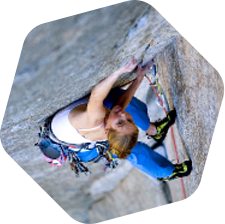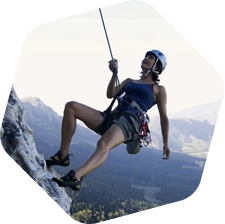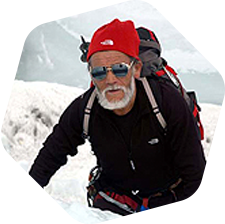Mild soap and cool to lukewarm water. A bathtub or large pail works well to allow complete submersion. Place rope in soapy water and agitate to remove dirt particles. Rinse well in several baths of clean water. It is extremely important to remove all soap residue. Leftover soap residue will attract dirt like a magnet. After rinsing, loosely coil your rope and air dry in the shade. Never use cleaners with bleach or bleach substitutes. Remember- it a soap is harmful to your skin then it is harmful to your rope!
Yes, UV rays are indeed detrimental to synthetic fibers. Rope should be kept in a rope bag when not in use. It protects the rope from UV degradation but also protects the rope from dirt and other possible contaminants. Keep in mind that modern synthetic fibers are packed with UV inhibitors to better protect their integrity. Years ago UV inhibitors were either absent or not as evolved as what raw material chemists have devised now. If you can scratch off sheath material with your fingernail it is most definitely time to retire the rope. Typically ropes are retired for wear issue long before UV degradation is an issue. Remember- store your ropes in the shade when not in use. Get a rope bag for storage.
Marking pens are fine to use on ropes as long as they are water based laundry markers. Years ago solvent based markers were the norm. Some of the solvents used in these old pens could reduce the strength of the sheath strands marked. These days most pens are water based so this is not as much of an issue as in years passed. We recommend a Sharpie “rub a dub” laundry marking pen.
Factory middle marks are ok until one end of the rope gets chopped off. Then the factory mark is no longer in the middle. Hmmm- look at the back of any telephone book here in the great Nation of America. If an end user gets hurt because their mark is no longer in the middle what would one expect to happen? We prefer the end user to make all marks so they are intimately familiar with which of the marks on their rope is the correct center mark. This can be accomplished by different styles of marking using a series of bands so the correct mark can be identified. A unique marking also helps to better identify ownership on your rope as well as the rest of your gear!
The answer to this is the same for a new car. You can total it right off the lot or you can get years of service from it. It all depends upon the user. Our recommendation is 5 years max for dynamic ropes and 10 years max for low elongation/ static ropes.
According to the Cordage Institute Standard CI 1801: A “Static” rope has a maximum elongation of 6% at 10% of its minimum breaking strength. A “Low Elongation” rope has greater than 6% but less than 10% elongation at 10% of its minimum breaking strength.
The best method is using a hot knife gun for nylon, polyester and polypropylene ropes. For Aramid or Hybrid Aramid ropes we suggest PVC cement since the Aramid fiber will not melt. Tape the end of the rope and dip into PVC cement. Allow to dry and cut off the taped section and re-dip a 2-3 inch end section of rope several times.
NO. 1/2 ropes [ also referred to as “Double Ropes”] are drop tested using a 55kG falling mass on a single line. Twin ropes are tested with an 80kG falling mass on 2 lines. Single ropes are tested with the same 80kG falling mass on a single line.
Please view the video for the easiest explanation.
We list our sheath mass by percentage of overall rope weight to assist in comparing competing ropes. Some manufacturers make what we’d like to term as “bold claims” while only having 30% of the total rope as sheath material. Think about it- rope sheath failure is typically the root cause of rope retirement. Why start out with a disadvantage / weak point by skimping on the sheath!!
Check out this cool video for the basics of constructing a load equalizing anchor.




